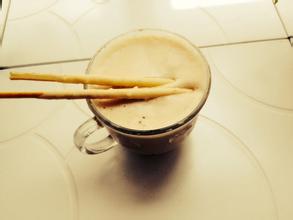Description of coffee bean flavor by Colombian bourbon red wine treatment introduction of taste varieties of grinding scale
Colombian red wine treated coffee beans
Washing is to remove the peel and pulp and then dry, the degree of fermentation is very low.
Honey treatment is to remove the peel, with part of the pulp for drying, the drying process will produce a certain degree of fermentation.
The sun is dried with peel and pulp, and the degree of fermentation is slightly higher in the drying process.
The red wine treatment is to bring out the link of "fermentation" alone, and let the biological bacteria participate, so the degree of fermentation is the highest.
This is why the wine flavor of the red wine treatment is particularly obvious, but sometimes the red wine treatment can be superimposed with the sun drying treatment, so it is also called the red wine sun treatment. The sun treatment here only means to dry the fermented shell beans naturally in the sun, rather than drying the whole coffee fruit with skin like the whole sun treatment.
To give two examples, the first example below has no sun-drying treatment, and the second example has a superimposed sun-drying treatment.
Example 1:
The coffee fruit is peeled by a Pinhalevse peeling machine, and the peeled coffee fruit is fermented with about 2% Pichia anomala bacteria, 2% Saccharomycopsis fibuligera bacteria and 2% Aspergillus niger bacteria at 40 degrees Celsius for 24 hours, then washed twice with an ultrasonic cleaning machine, then soaked and fermented in clean water for 24 hours, then dried to 10% moisture content in a blast oven, and then shelled with a sheller.
Special manual picking teams have been trained and picked strictly in accordance with the picking requirements of boutique coffee beans: immature fruits < 2%, defective beans < 3%, floating beans < 5%.
Acetic acid fermentation-aerobic fermentation
Lactic acid fermentation-anaerobic fermentation
Expectations for the taste:
Acetic acid fermentation: cleaner, more lively acid, brighter acid, citric acid
Lactic acid fermentation: taste more round, less cleanliness than acetic acid fermentation, higher alcohol thickness, malic acid / tartaric acid
Prior to this, the treatment plants used manual operations handed down from generation to generation, such as biting to feel the degree of fermentation of coffee beans. This kind of fermentation is uncontrollable and changeable.
The fermentation method can be controlled to monitor the fermentation degree by controlling the PH value. To achieve predictable results and consistent production in each batch

Important Notice :
前街咖啡 FrontStreet Coffee has moved to new addredd:
FrontStreet Coffee Address: 315,Donghua East Road,GuangZhou
Tel:020 38364473
- Prev

Description of flavor of Brazilian Bahia coffee beans introduction of manor varieties in planting environment with grinding scale powder
Brazilian coffee flavor Brazilian coffee, generally refers to coffee produced in Brazil. There are many kinds of Brazilian coffee, and like other Arabica coffee, Brazilian coffee is called Brazils to distinguish it from Milds coffee. The vast majority of Brazilian coffee is unwashed and sun-dried and is classified according to the name of the state of origin and port of transport. Brazil has 27 states and 17 states produce coffee, but 4 of them
- Next

The base of rose summer Flavor Characteristics Taste Price Colombia Panama grind scale Soy Coffee Introduction
In Cuba, the cultivation of coffee is regulated by the state. Cuba's best coffee-growing areas are located in the Central Mountains. Because this area is not only planted with coffee, but also produces precious minerals such as quartz and crystal, it is also known as Crystal Mountain. Currently, Crystal Mountain Coffee is synonymous with premium Cuban coffee. The most typical is Cubit.
Related
- Detailed explanation of Jadeite planting Land in Panamanian Jadeite Manor introduction to the grading system of Jadeite competitive bidding, Red bid, Green bid and Rose Summer
- Story of Coffee planting in Brenka region of Costa Rica Stonehenge Manor anaerobic heavy honey treatment of flavor mouth
- What's on the barrel of Blue Mountain Coffee beans?
- Can American coffee also pull flowers? How to use hot American style to pull out a good-looking pattern?
- Can you make a cold extract with coffee beans? What is the right proportion for cold-extracted coffee formula?
- Indonesian PWN Gold Mandrine Coffee Origin Features Flavor How to Chong? Mandolin coffee is American.
- A brief introduction to the flavor characteristics of Brazilian yellow bourbon coffee beans
- What is the effect of different water quality on the flavor of cold-extracted coffee? What kind of water is best for brewing coffee?
- Why do you think of Rose Summer whenever you mention Panamanian coffee?
- Introduction to the characteristics of authentic blue mountain coffee bean producing areas? What is the CIB Coffee Authority in Jamaica?

